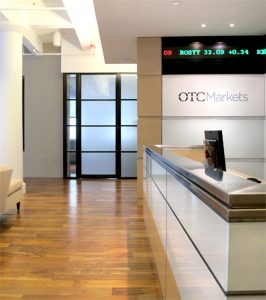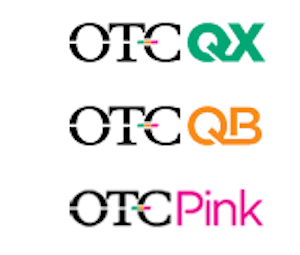 When it comes to penny stocks many people immediately think of the bullpen and the flickering boards that traders use to make moves. All those trades are official and are open for everyone to see. However, there is another type of market that operates slightly underground and is less transparent than the official stock floor.
When it comes to penny stocks many people immediately think of the bullpen and the flickering boards that traders use to make moves. All those trades are official and are open for everyone to see. However, there is another type of market that operates slightly underground and is less transparent than the official stock floor.
This market is called the over-the-counter market (OTC) and it is essentially a decentralized trading market that has no definitive location. It was the market that once dealt with pink sheets and is one of the more difficult areas to police. The OTC market tends to work pretty smoothly these days but it has been seen to be the result of some major problems in the past. If you interested to learn more about the OTC market and what it’s all about, continue to read this article.
A Brief History
OTC market first began around 1913 and was founded by a man known a Roger Babson. When the OTC Market Group first got started, it was named the National Quotation Bureau (NQB). This name stuck for years to come and the company would deal with bonds and stocks and would print the quotations on different colored pieces of paper. These were known as pink sheets and yellow sheets. However, the company wanted to move away from the sheets that they were dealing with and wanted to move investors online. In 1999, they introduced their electronic quotation service and eventually changed their name to Pink Sheets LLC and then to Pink OTC Markets in 2008. In 2010, they changed their name for a final time to what we know today as the OTC Market Group.

The main difference with the OTC Market Group is that companies do not have to file with the SEC and are therefore not governed officially. However, even though this is not a requirement, many companies will file with the SEC regardless. The majority of the OTC market place consisted of established foreign companies but there are a few less traded companies on the OTC also.
The Different Markets
Because companies do not have to file with the SEC, the OTC Market Group have set up three different markets (or levels) that make sure that different companies are separated depending on their financials and corporate transparency. By doing so, it means that the OTC can effectively remove any companies that may be operating in schemes or fraud. Here are the three different market levels.
 OTCQX
OTCQX
This is the OTC market that is the most official out of all the different levels. Although the companies in their market do not have to be registered with the SEC they have to do a screening with the OTC Market Group beforehand. The companies in this level are usually multinational but there are a few domestic companies also.
OTCQB
This is a less regulated market in the OTC and requires companies to have at least a one penny bid requirement. This, as a result, removes any companies that are trying to perform stock scams and promotions. The companies here have to go through annual checks where they are required to disclose all their company information.
Pink Sheets
The Pink OTC market is where the majority of the fraud companies hang out. This area doesn’t need any registration with the SEC and doesn’t receive a lot of management from the OTC Group. There are not bid requirements with this market and they are also put into further categories depending on how frequently they disclose information.
Conclusion
The OTC market has come a long way and is now primarily operating online. They are a Group that allows all sorts of companies to join in with the trading world and gets companies on the map that may have not got SEC registration. The main issue with this market place is that there is a lot of fraud floating around as there is no official regulation. Therefore, when you’re dealing with this market, it is wise to have your wits about you.
COMMENTS